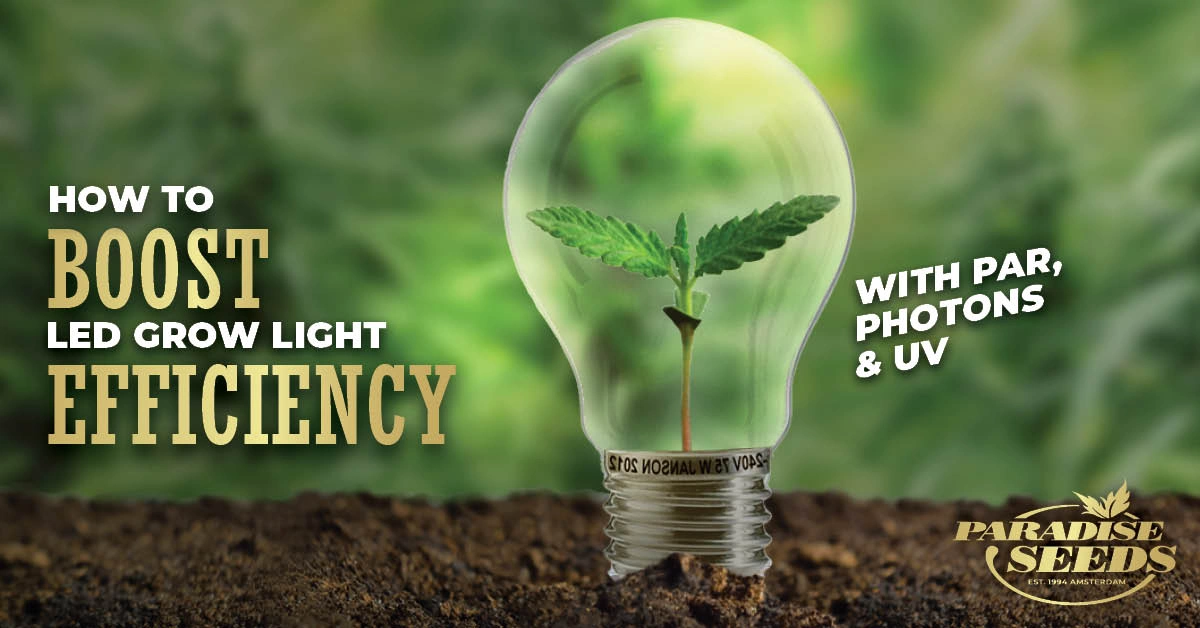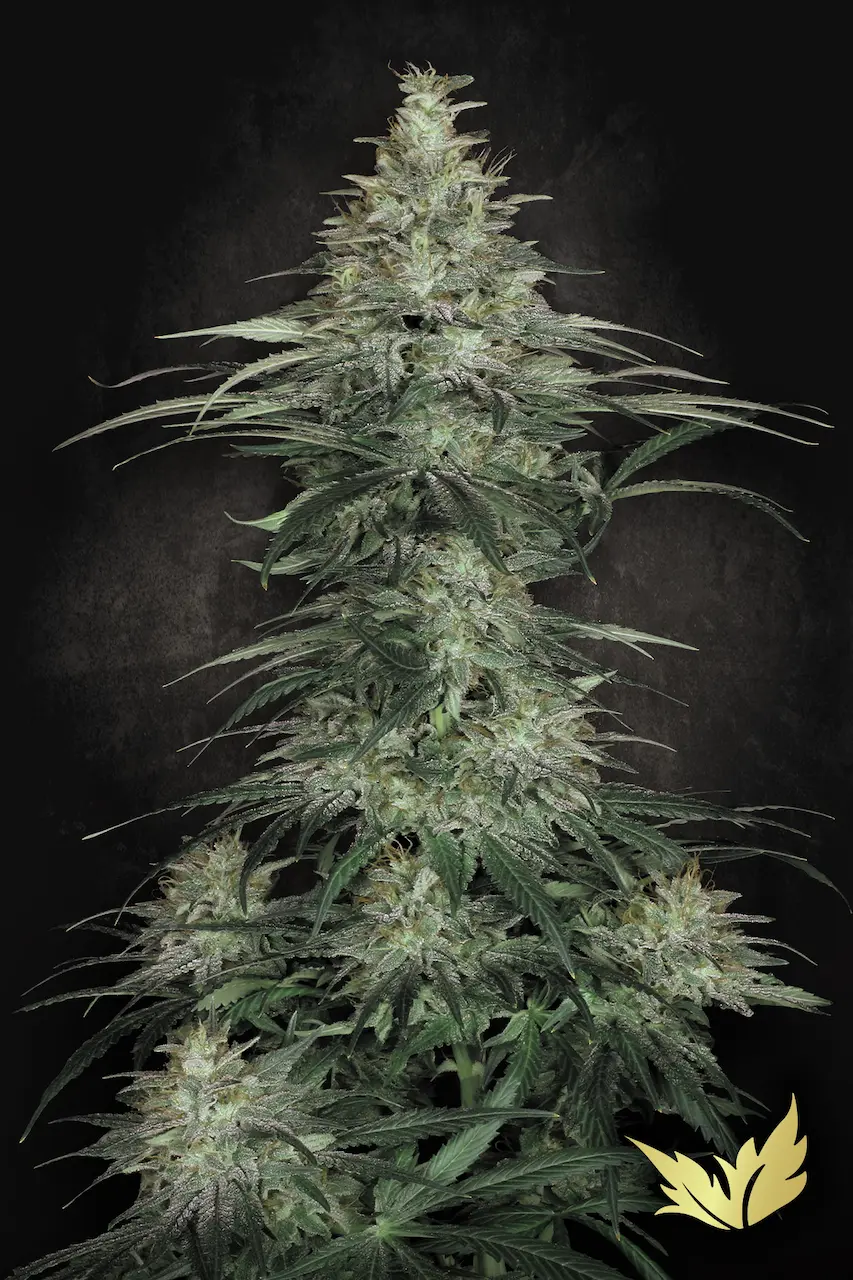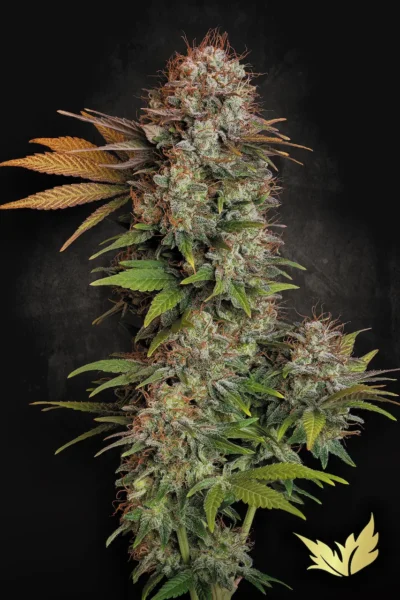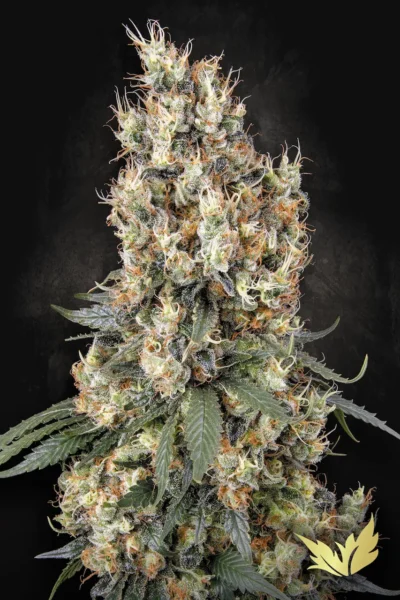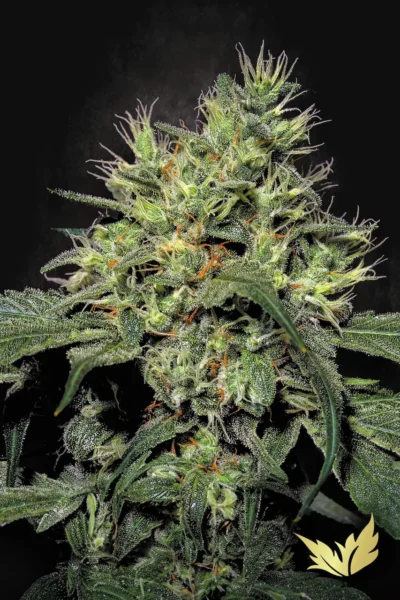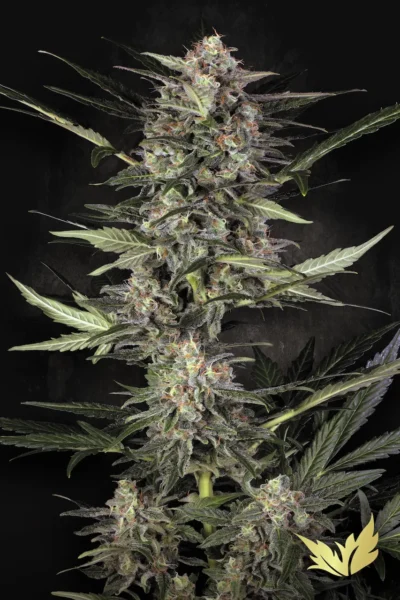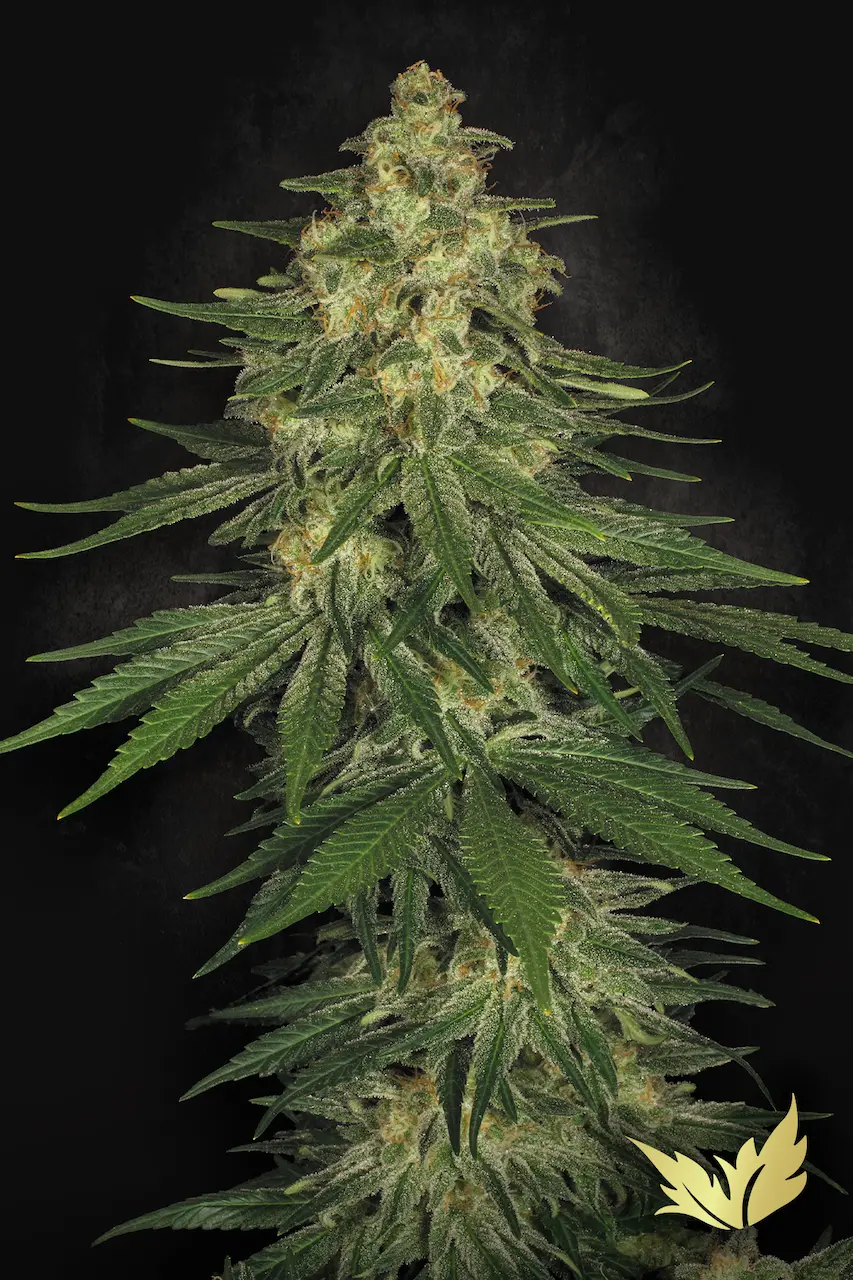This month LED experts, Grow Lights Australia, give an insight into how to boost LED grow light efficiency with PAR, photons and UV.
Most growers know the benefits of running LED (Light Emitting Diode) lights versus HIDs (High Intensity Discharge) these days, as the best horticultural LEDs are at least 50% more efficient than the best double-ended HPS or CMH lamps.
LEDs convert 50% more electricity to light. But not all LEDs have the same efficiency, so it helps to understand how LEDs are rated and what tricks manufacturers use to make their fixtures appear more efficient than others.
Energy efficiency ratings of horticultural LEDs are usually measured in umol/j – which is the number of photons per unit of energy (one joule is equal to one watt of energy per second).
The problem is, not all photons are created equal.
Photons and LED grow light efficiency
Ultraviolet light comes in energy packets called photons. A 440nm blue photon requires 50% more energy to create than a 660nm red photon – even though they both have the same photosynthetic value (one photon – regardless of colour – drives one unit of photosynthesis).
This is why two diodes that have the same radiant efficiency (that is, the amount of electricity converted to light) can have very different quantum efficiency (the amount of electricity converted to individual photons).
This is one reason why 660nm monochromatic red diodes are among the most efficient LEDs on the market – because 660nm light has a high quantum efficiency of around 5.5 umol/j (the theoretical maximum number of photons a 660m diode can produce per joule of energy).
Another reason is due to the architecture of the 660nm LED that results in a radiant efficiency of up to 75% or more.
If this sounds complicated, then all you have to remember is that the total efficiency of an LED in umol/j is the radiant efficiency multiplied by the quantum efficiency. For example, if you multiply the theoretical maximum of 5.5 umol/j by the radiant efficiency of 75%, you get an overall efficiency of 4.125 umol/j.
But what if we want to create a UVA (Ultraviolet A) photon to increase cannabinoid and terpene production? Some 405nm UVA diodes are also up to 75% efficient. However, 405nm UVA light has a much lower quantum efficiency than 660nm red light (“nm” refers to nanometers – the length of each light wave. Shorter waves have lower numbers but carry higher energy).
A 405nm diode has a quantum efficiency of around 3.36 umol/j, so when we multiply this by 75%, we get a total efficiency of only 2.52 umol/j. Many indoor cannabis seeds growers would assume that the 660nm diode at 4.125 umol/j is much more efficient than the 405nm diodes at 2.52 umol/j – but they are equally efficient in terms of energy consumption!
Understanding PAR when using LED grow lights
Now let’s expand this to the entire PAR range of 400-700nm. When using LED grow lights for indoor cannabis seeds growing, PAR stands for “photosynthetically active radiation”, which is the range of light used for photosynthesis. This range also happens to be in the visual range of humans. UVB light and infrared light fall outside this range, so we can’t see them.
Remember: a “true” full spectrum horticultural LED grow light that has wavelengths all through the PAR range of 400-700nm will have a lower umol/j efficiency than a light that has a heavy red component with no violet or UV.
That is why a mix of white and 660nm LEDs will have a higher umol/j rating than a light that contains UVA and violet.
So if you want to boost LED grow light efficiency (and thereby harvest yields)when you buy a grow light for indoor cannabis seeds cultivation, don’t just look at the umol/j figure – ask the manufacturer if the light has any UVA or Far Red light, and what the overall umol/j figure will be once you add that supplementary light.
The importance of UV in LED grow lights
UV in LED grow lights is important for cannabinoid and terpene production, as it mildly stresses the plant into producing more of these secondary metabolites to protect it from DNA damage. Far Red can accelerate flowering and provide larger biomass, but Far Red diodes are not very efficient (around 55%).
Further, Far Red falls outside the 700nm PAR range, so is not even counted in most umol/j figures!
This means that an advanced LED grow light that has more than 10% of its light outside the traditional 400-700nm PAR range (like the High Light 420 series by Grow Lights Australia that has 1% UVA and 10% Far Red) will have 1000 PFD (photon flux density) even though on a typical light meter it reads 900 PPFD (“photosynthetic” photon flux density).
When we speak of LED grow light efficiency, not all LED grow lights are created equal.
-
€39.50 – €108.00 Select options This product has multiple variants. The options may be chosen on the product page
-
€35.50 – €96.50 Select options This product has multiple variants. The options may be chosen on the product page
-
€29.50 – €79.00 Select options This product has multiple variants. The options may be chosen on the product page
-
€22.50 – €59.50 Select options This product has multiple variants. The options may be chosen on the product page
-
€25.50 – €69.50 Select options This product has multiple variants. The options may be chosen on the product page
-
€29.50 – €79.00 Select options This product has multiple variants. The options may be chosen on the product page



